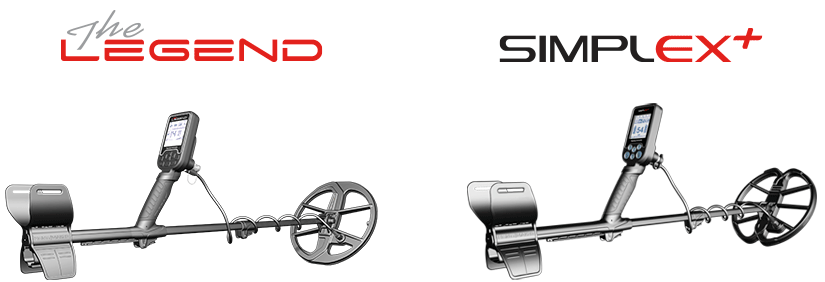TabWhisperer said:
Has anyone noticed how these machines handle the bottle caps and can tabs?
The difference between these trash targets are that Bottle Caps are magnetic or ferrous-based metal targets and ring-type Pull-tabs, and modern rectangular Pry-Tabs, are of non-ferrous material.
TabWhisperer said:
Any differences in the standard or small coils?
All of the search coils handle them in a 'typical' manner as other Double-D coil designs. Bottle Caps can be 'classified' by using techniques I have used since '71, instructed customers and friends since the mid-70's and taught in seminars since '81. I coined two terms for these techniques, "Quick-Out" and "EPR" [size=small](for "Edge-Pass Rejection")[/size] decades ago. I describe these techniques in the Audio Target Classification topic under Tips & Techniques on the AHRPS org site.
TabWhisperer said:
I know with some machines you can walk the coil off the target and get a iron grunt on the coil edge on caps.
At times, you will have some ferrous type Bottle Caps [size=small](not to be confused with the taller aluminum Screw Cap)[/size] that will 'Lock-On' with a reasonably good TID reading close to a Penny/Dime or Quarter range a little easier with a Concentric coil than a Double-D. The Double-D design might be a bit inconsistent with a center-of-axis coil sweep. However, using an 'EPR' technique, most Bottle Caps will then respond with a 'proper' audio and visual response to indicate their Iron based composition.
With most Concentric search coils, the 'Edge' reference is about ½" to 1" in toward the center from the outer edge of the search coil. With most Double-D designs, however, the 'Edge-Pass' point is from about the physical edge of the coil, from the edge out to about ½" to 1" or more away from the tip edge. A lot will depend upon the depth [size=small](coil-to-target)[/size] of the Bottle Cap, and the Sensitivity setting used, as well as the search coil size in use.
TabWhisperer said:
Tabs would usually jump around on the ID.
Pull Tabs and Pry Tabs might lock-on at times, or they might be jumpier, all depending upon the taps physical size, condition ([size=small]with or without the 'beaver tail')[/size] and position in the ground. The older type PT's will tend to read all over the place. I just finished a week-long trip to a few old town sites and some had been used by scout groups for camping going back to the early '80s. That and other camping activity left a wide array of ring-type Pull-Tabs to deal with, and with the Racer and smallest coil and stock coil, the TID's ranged from '51' to '68', and if swept from opposing directions I would usually get a more inconsistent read-out.
By the way, in the trashier conditions I am favoring the 3-Tone [size=small](Racer)[/size] or DI3 [size=small](FORS CoRe)[/size] search modes and with either model I can run at a Sensitivity of '50' to '70' and do pretty well, but if the trash content is a little lower then I bump it to '85' to '99,' if virtually trash-free. If too trashy, I have operated with the Sensitivity in the '10' to '30' range and they both worked quite well.
In the locations with minimal trash targets, I like the 2-Tone or DI2 search modes. This mode is a little 'hotter' or more sensitive than the 3-Tone mode. However, if you look back at some of the Nokta/Makro posts made by Dilek, she mentioned that prior to the Racer release they were enhancing the 3-Tone search mode to be a little more sensitive, somewhat like the 2-Tone VCO based search mode.
Anyone, with either the FORS CoRe or Racer, only needs to be patient and put in the time to really learn these detectors and they will be more than satisfied with their investment.
Monte


